Home Safety Checklist For Seattle
Staying safe and secure in your house should be your number one concern. But are you forgetting one or two key safety components? Look over this home safety checklist for Seattle and discover where your home needs some work.
We give you some whole-house safety ideas, and then we whittle it down room-by-room. Then, you can call (206) 451-1051 or fill out the form below to speak to a security agent.
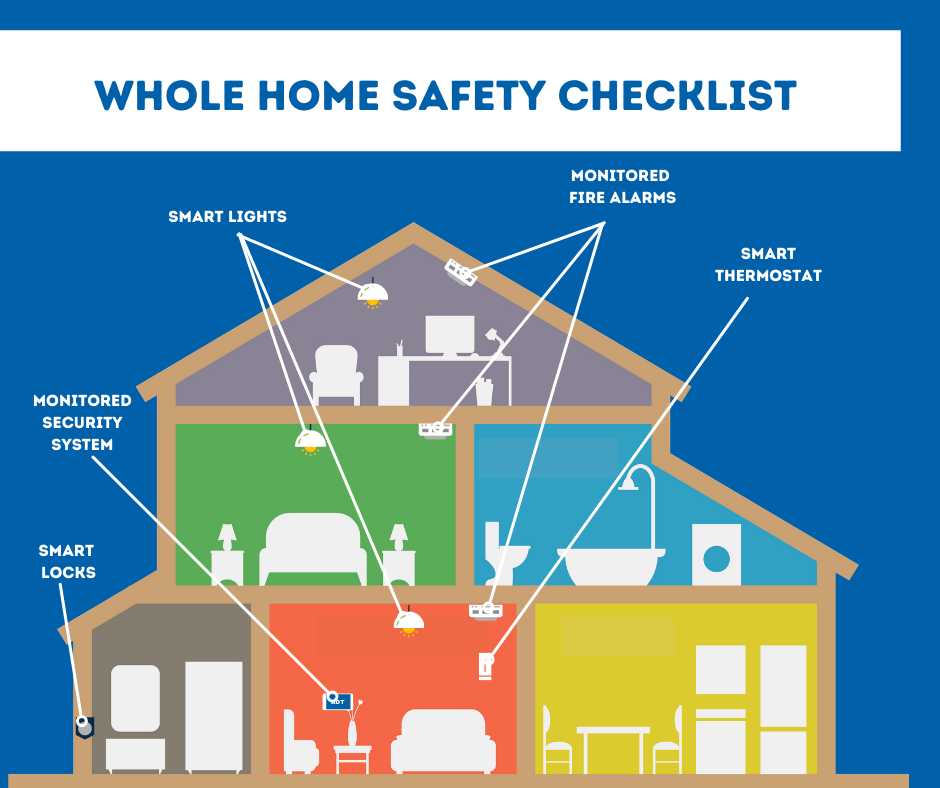
Whole Home Safety Checklist for Seattle
While you should use a room-by-room method for home safety, there are a few methods that are practical for each part of your home. These devices can sync to each other through a touchscreen hub, and can even work off other components. You can also manage all your home safety components using a smartphone app, like ADT Control:
-
Monitored Home Security System: Each one of your doors and windows should use a sensor that alerts you and your family to intrusion. After the alarm triggers, your monitoring agent responds to the call and sends emergency personnel.
-
Smart Lights For Every Major Room: Sure, you can program your smart bulbs to become more energy-efficient. But smart lights can also help you remain safe throughout an emergency. Have your lights flip on when a sensor trips to frighten off burglars or brighten the way out to a safe place.
-
Smart Thermostat: Likewise, a smart thermostat in Seattle should save you up to 15% in energy costs. Also, it can flip on an exhaust fan when your alarms senses a fire.
-
Monitored Fire Alarms: At the very least, you have a smoke detector on every level of your house. You can increase your fire game by installing a monitored fire alarm that detects unusual smoke and heat, and pings your round-the-clock monitoring agents when it senses a fire.
-
Smart Door Locks: Every entryway that uses a keyed lock can use a smart door lock. Now you can preset key codes to each family member and get alerts to your phone when the locks are unlocked. Your doors can even automatically open, helping you to quickly flee the house during an emergency.
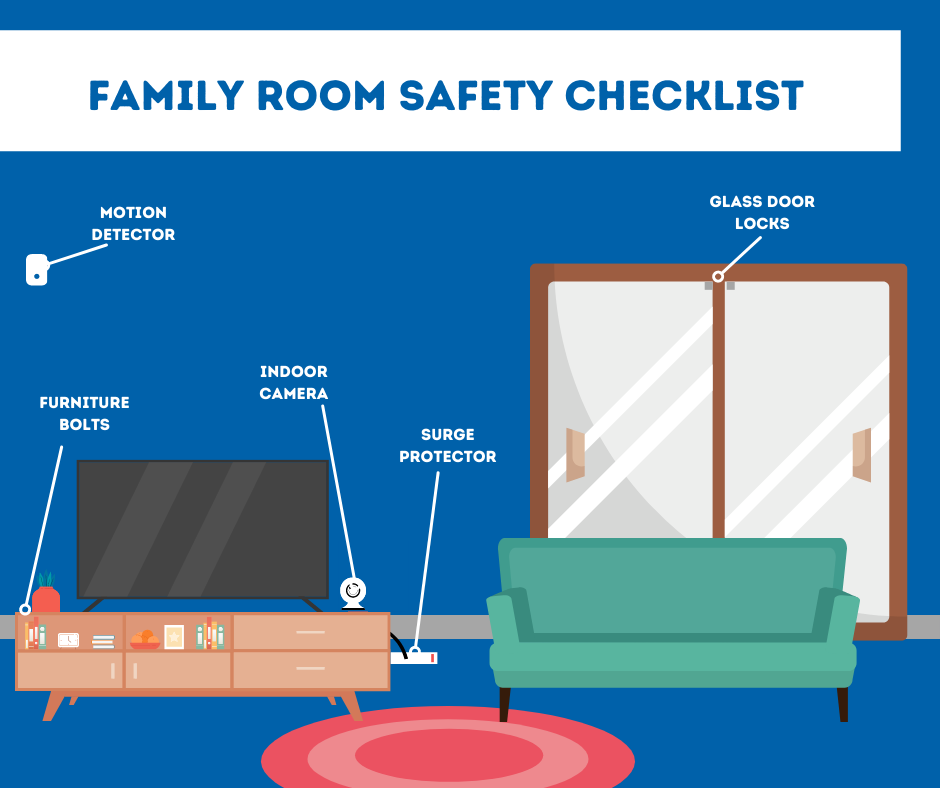
Family Room Safety Checklist For Seattle
You’ll hang out most in your family room, so it’s the perfect room to start making your home more secure. Highly sought after items, like a big screen or video games, probably reside in your family room, making it a tempting area for thieves. Begin with installing a motion detector or indoor security camera by the doorway, then try all these suggestions:
-
Motion Sensors: By hanging motion sensors, you’ll hear a loud alarm if they sense suspicious movement within your family room. You’ll want motion detectors that aren’t set off by pet movements or you’ll get a tripped alarm every time your pet comes in for a midnight stroll.
-
Indoor Camera: An indoor security camera puts a constant watch on your living room. View real-time feeds of the area so you can see what’s going on without leaving your bed. Or talk with family members in the family room by using the two-way talk feature.
-
Surge Protector/Outlet Maintenance: Protect all your electronics and quit overburdening your circuits with a surge protector. For extra comfort, install a smart plug with anti-surge functionality in the unit.
-
Heavy Furniture Secured To The Wall: If you have babies or toddlers, you’ll want to attach your bookshelves and entertainment center to your wall. This is extra crucial if your family room uses carpet that could make objects extra unstable.
-
Enhanced Locks For Sliding Glass Doors: If your living room has a sliding door that leads to a patio, deck, or porch, you can see that the latch is usually thin. Use a custom lock, like a metal bar or locks that are located on the bottom and top of the opening.
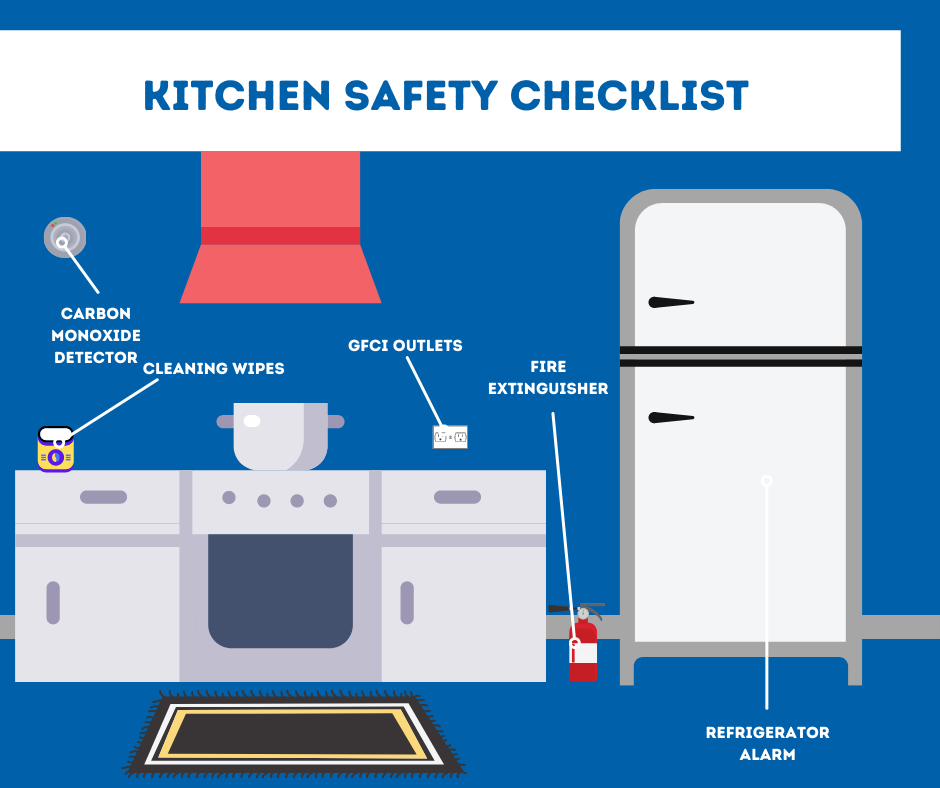
Kitchen Safety Checklist For Seattle
The kitchen has many items that should provide safety and security to your home. Many of these items are also a snap to add and can be bought from the a retail store:
-
Fire Extinguisher: Fire can spring up from an overfilled skillet or a faulty burner. Always keep a fire extinguisher in close reach for any stove or oven mishaps.
-
Circuit Interrupter Box On Each Outlet: A circuit interrupter outlet should be used anywhere there’s nearby water to lessen the chance of a deadly shock. That means the plug outlets by your sink and kitchen counter. For 30 years, it’s been standard to have one circuit interrupter outlet per dedicated circuit. But if you don’t want every outlet to flip off when one outlet flips, you’ll want to install a separate GFCI per outlet.
-
Monitored Carbon Monoxide Detector: A carbon monoxide detector is recommended for kitchens that have gas for the stove and oven. If your gas burners leak, the carbon monoxide detector will cause a loud siren and contact your monitoring expert.
-
Cleaning Wipes Or Spray: The biggest safety issue in the kitchen is actually bacteria and protein from blood from meat and vegetables. Always keep cleaning wipes or spray to scrub off your surfaces after making a meal.
-
Refrigerator/Freezer Alarm: The food items in the fridge have to remain at a constant temperature to stay safe to eat. If you leave the freezer or refrigerator door open too long, then a constant beep will let you know so you can shut it securely. Some appliances already have a pre-installed alarm, others won’t, and you’ll have to get an external alarm from the store.
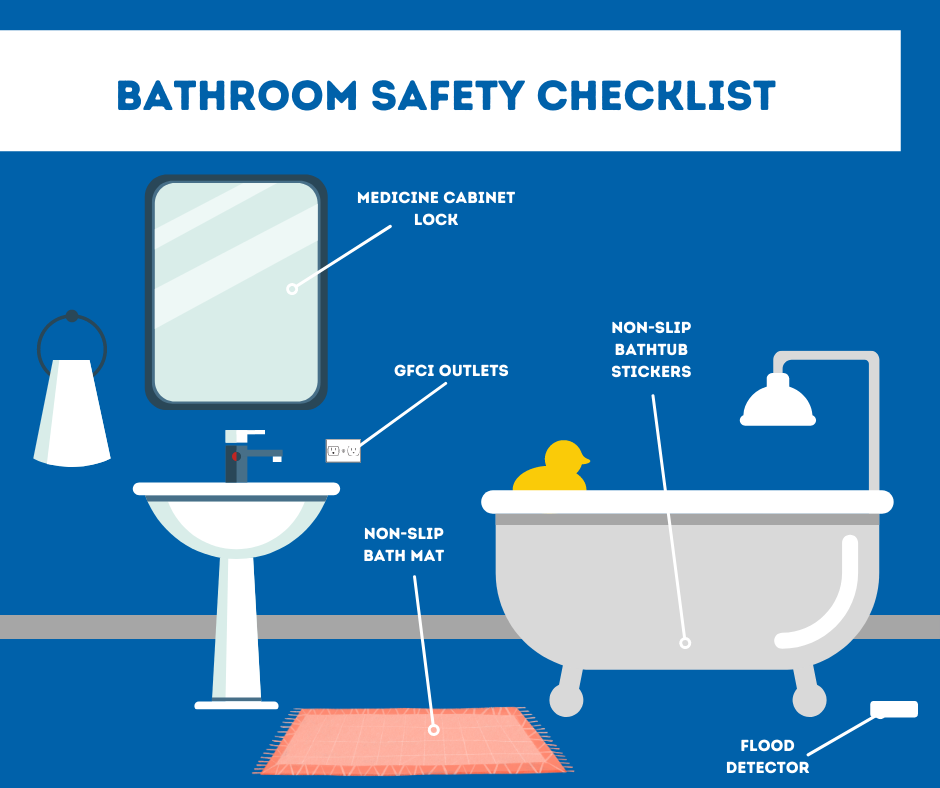
Bathroom Safety Checklist For Seattle
Just because you may not have a lot of square footage in your bathroom, you will still have safety hazards. From flood detectors to medicine care, here are some safety ideas for your bathroom:
-
Flood Detectors: A leaking toilet or bathtub can cause a whole lot of damage. Find out early about leaks with a flood detector and save the time and money from damage.
-
Textured Shower Mats: A slip in the bathroom can be a painful occurrence, causing pulled muscles, gashed heads, or broken bones. You can avoid these hazards with a no-slip bathroom mat for while you towel off.
-
Non-slip Bathtub Stickies: Like a tiled floor, a tub basin can be a slippery area to move in. It’s a good idea that each tub has some non-slip stickers so your feet have a bumpy patch to grip.
-
Medicine Door Lock: If you have curious children or a family member with memory difficulties, you should take additional attention regarding prescribed medicine. Safeguard your prescriptions by getting a medicine cabinet with a child-proof lock.
-
GFCI Circuits: While installing better outlets in the kitchen, you need to also put in a safer GFCI outlet on every bathroom circuit. This will shut off the electric current if water enters the outlet or you have an unusual jolt from an electric razor or hair dryer.
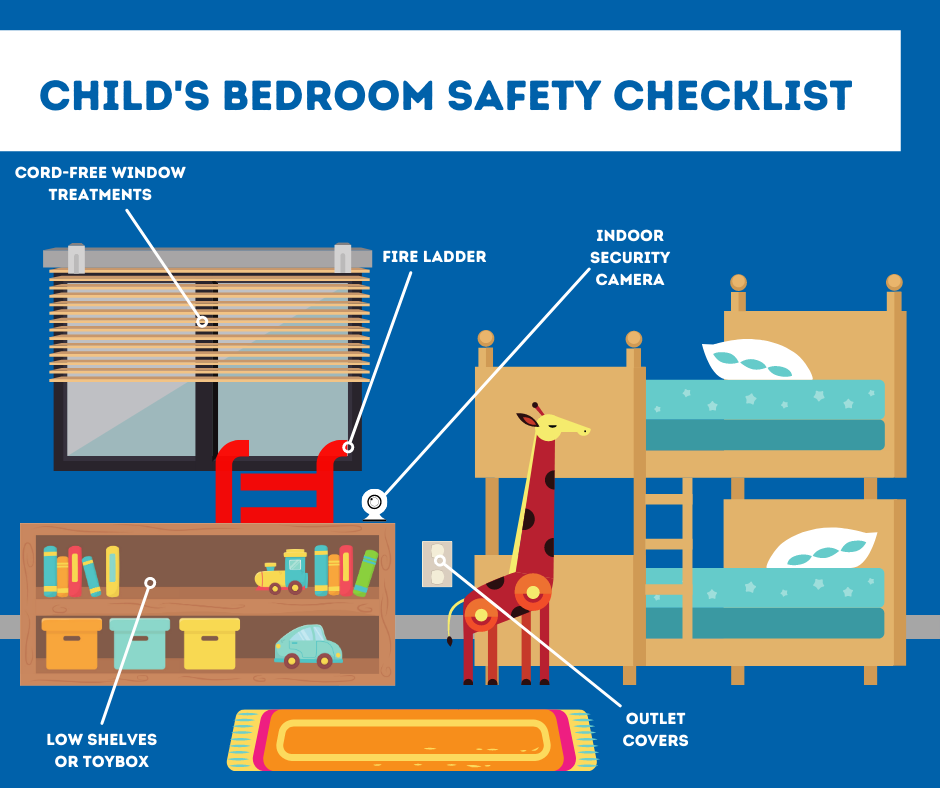
Children’s Bedroom Safety Checklist For Seattle
Your child’s bedroom should counterbalance safety with simplicity. If their window treatments or other things are safe but hard to operate, then your child may try risky methods -- like shimmying up a bookshelf -- to touch them. Here are some straightforward, yet safe, ideas:
-
Cordless Window Coverings: Safety professionals have designated window treatment cords a secret problem for kids and pets. Put in motorized shades that you can easily open and close through a remote control. Or better yet, pair your shades to your security system so they open automatically when the sun comes up, and lower at bedtime for extra privacy.
-
Indoor Security Camera: A camera sitting on your kid’s desk can act just like a baby monitor that you can see with your phone. And if they need you, they can push the 2-way talk feature on the camera.
-
Plug Covers: While every outlet should use outlet safety caps on them to protect your little children, this is doubly needed in a child’s bedroom. It’s the one place in your house where your children will most likely be solo without adult supervision.
-
Window Safety Ladder: If you use bedrooms on above the first level, then you need to put in a window fire ladder. These will let a child get out of their room when the stairs or lower levels are blocked off with fire. Make sure to go over how to unfurl them at least twice a year.
-
Toy Box Or Low Shelves: It’s weird to view a toy chest as a safety device, but you’ll see the light if you’ve ever stepped on a building block in your stocking feet. A clean floor means a quick escape when there’s a safety or security event.
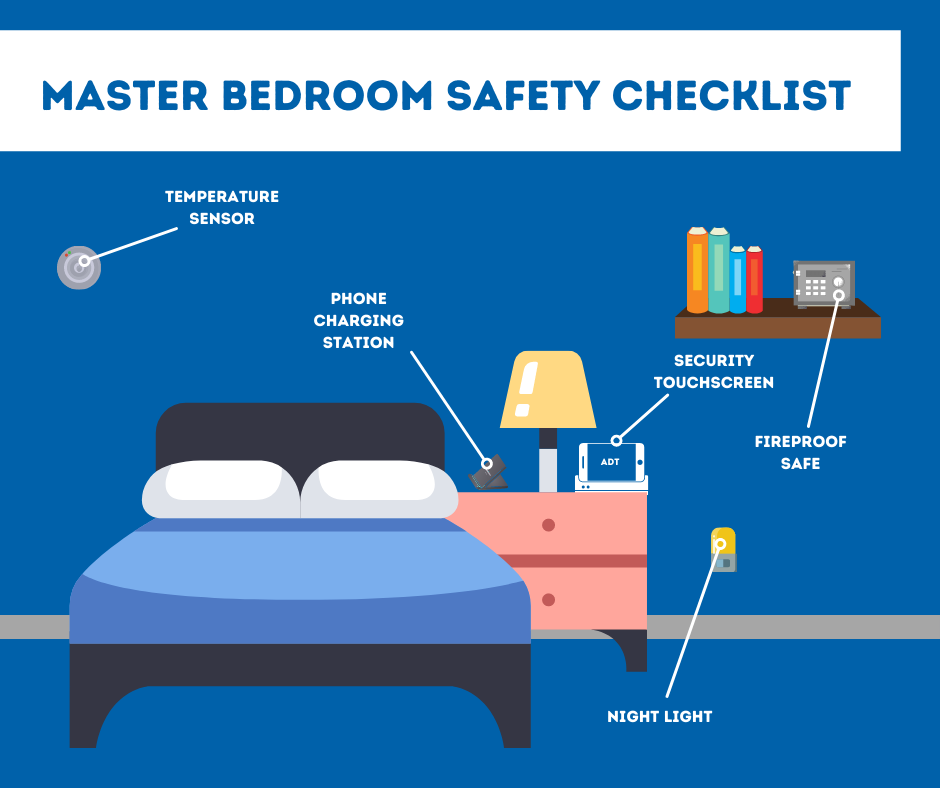
Main Bedroom Safety Checklist For Seattle
Your bedroom should be an oasis, so let your safety devices make life easier if you experience an emergency event. After all, being jerked awake by a wailing siren can be confusing.
-
Smart Hub Touchscreen: Having a touchscreen on your bedside table gives you a sense of what’s happening without jumping out of bed. You could alternatively use your ADT phone app. However, the HD touchscreen is often easier to manage to use when you’re coming out of sleep and disoriented.
-
Phone Charging Stand: We rely on our phones for so much now alarm clocks, news readers, games, and sometimes even phones. But, a dead phone in the middle of the night cuts us off from the outside world if something goes wrong. So, a charging cord or station is should be used nightly.
-
Nightlights Or Voice Activated Smart Lights: A plug-in light can calm you when you’re jolted awake from a fire alarm or unexpected sounds. If you have trouble falling asleep with a nightlight, put in smart lights in your bedroom. Then you can have light simply with a mobile device or voice direction.
-
Fireproof Lockbox: Store your important papers like social security cards, passports, or a spare checkbook in a fireproof safe. This can be a big one that camps out in a corner or a smaller handheld safe that you can grab when you leave during an emergency event.
-
Temperature Sensor: The issue with a master bedroom is that they might feel too stuffy or be cold because they sit across the house from the thermostat. A temperature sensor will communicate to your smart thermostat so you will have a nice, restful sleep at the perfect climate.
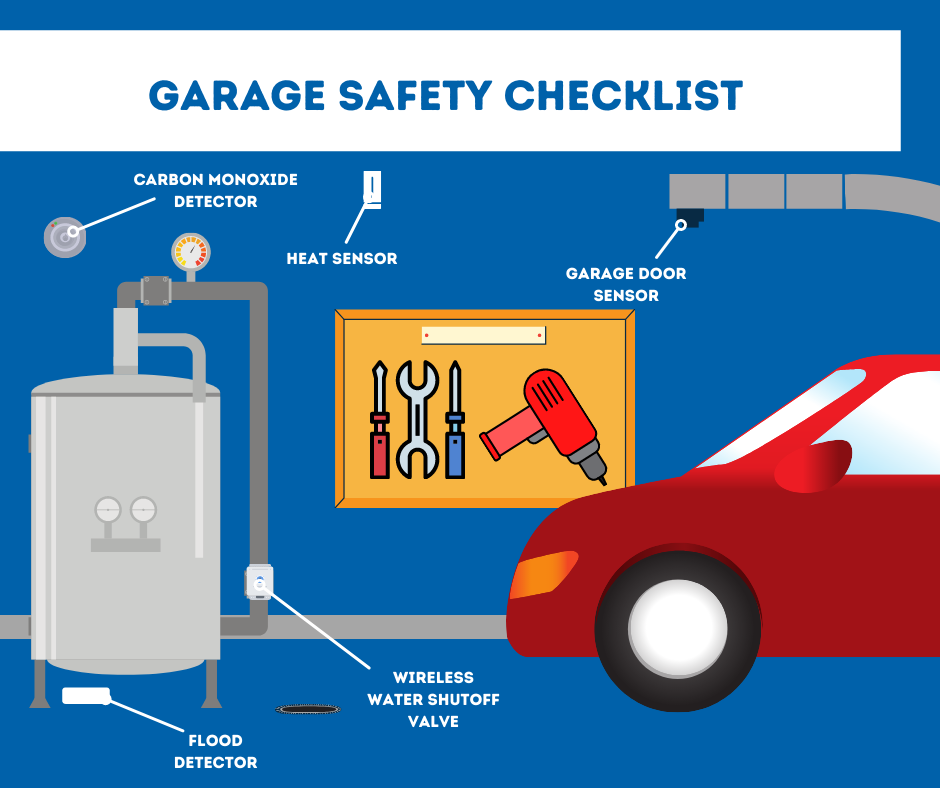
Basement/Garage Safety Checklist For Seattle
Most safety issues in the basement or garage deal with your pipes or HVAC system. Discovering issues at the source can stave away more devastating emergencies later on. So, as you walk around your storage areas, pay attention to these critical items:
-
Water Detector Or Sump Pump Alarm: Installing a flood sensor in back of your water heater and sump pump can stop you from finding a mess when you walk into your garage or basement. It’s definitely better than rummaging through a heap of destroyed storage boxes.
-
Carbon Monoxide Detector: It’s smart to have a CO detector in a place where a CO leak can spring up. If you have a gas furnace, you’ll want to put a detector in the same place as your inbound pipes.
-
Remote Water Shutoff Valve: If your flood alarm detects a hot water leak or a broken pipe, then you will have to shut off the primary water line immediately. With a WiFi shutoff valve, you can turn off your water flow from any mobile device. That’s perfect when you’re out of town and see a flood sensor text on your phone.
-
Garage Door Sensor: Leaving the garage door open brings about all types of issues. You can waste HVAC energy through that large opening, and critters or thieves can just saunder in. A remote sensor will text you about an open garage door and lets you close it through the app.
-
Heat Sensor: A heat sensor in your basement or garage is handy if you wonder about frozen pipes. The heat in these areas can be wildly different than the rest of the home, so you may need to maintain a close look on them with your mobile app.
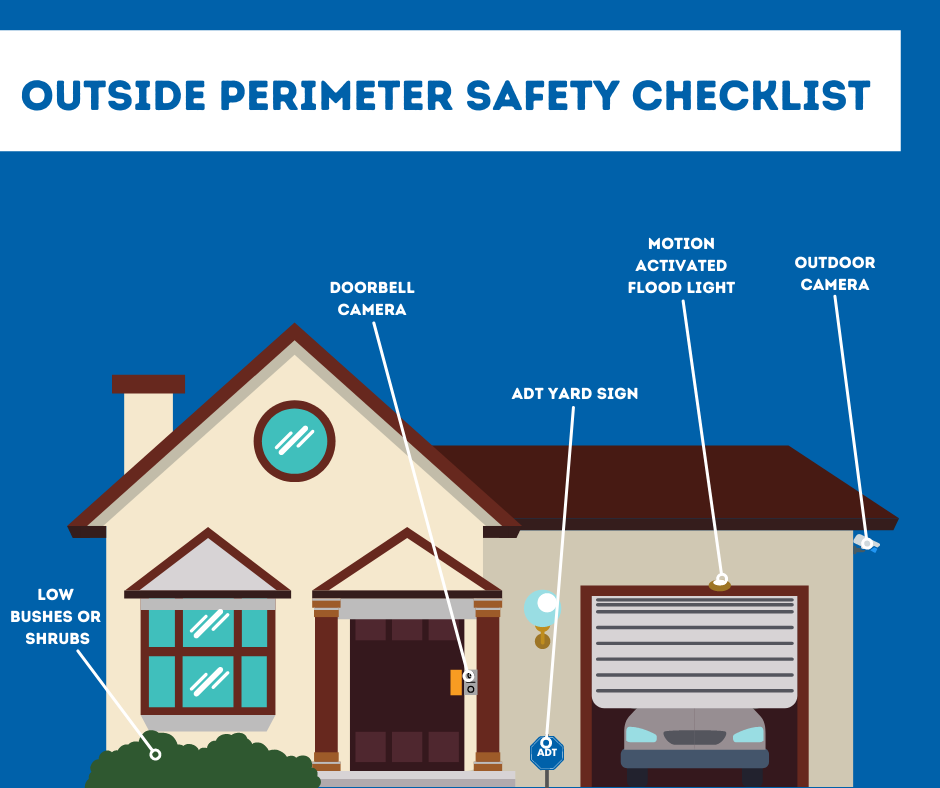
Outside Perimeter Safety Checklist for Seattle
Your foliage, drive, and front step are just as crucial to make safe as the inside of your home. Try this checklist to create a safe outside:
-
Doorbell Security Camera: See who’s at the the front step before you open it and talk to visitors. See package deliveries and review video clips if they are taken.
-
Outdoor Camera: You can hang outdoor cameras to guard against late night activity in your yard. These cameras are especially useful in places where you may not have a window -- like a side yard or by the driveway.
-
Window Height Bushes: Tall shrubs can offer some serenity, but they also block your view of the yard and curb. Don’t give potential thieves an area to hide. Plus, high bushes, shrubs or foliage too close to your house can obstruct gutters and summon pests.
-
ADT Signs And Decals: One of the biggest deterrents for home intrusion is telling would-be intruders that you own a monitored security system. An ADT yard sign by the front door and a window sticker will show ne'er-do-wells that they should move on to an less prepared target.
-
Motion Controlled Porch Light Fixtures: Light is the biggest deterrent to those who skulk in the unlit places. Motion-triggered lights on your deck, patio, or garage can frighten lurkers away. Lights also help you see the walk when you come to the house late at night.
Use Secure24 Alarm Systems To Help You Finish Your Home Safety Checklist for Seattle
While Secure24 Alarm Systems can’t help you with every item on your Seattle home safety checklist, we can offer a customized home security. With alarms, security cameras, and home automation, we can customize the ideal system for your house’s needs. Simply contact (206) 451-1051 and talk to a professional or complete the form below. Or customize your own ADT system with our Security System Designer.
